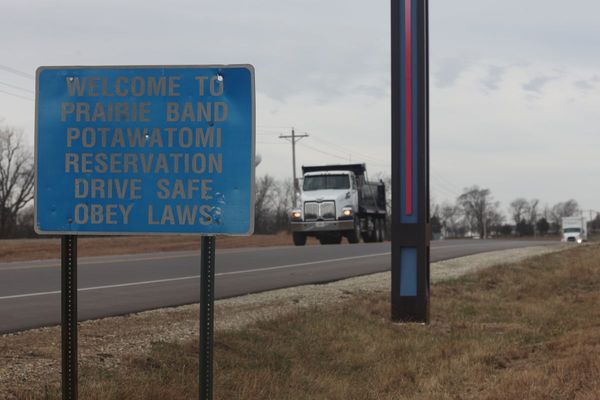WITH an unusually warm spring and an even warmer summer, young people in Edinburgh are gathering more than ever.
However, with product price hikes every couple of months, rent increases and tourists in every corner, there are not many third spaces where young people can gather freely and affordably.
A third place is a social space separate from home and work, where people can gather and interact. Their disappearance is a worldwide phenomenon affecting everyone who cannot afford to pay to stay in cafes, bars, restaurants, gyms, or any sort of class or workshop.
In a 2021 article by Angela Henshall for the BBC, she expanded on the importance of third places for our health, happiness, and sense of belonging in our communities.
“The COVID-19 pandemic catalysed many major shifts in society, but there are two main social effects. First, our discrete work and home spaces immediately collapsed into one another – arguably accelerating the collapse of boundaries that have been eroding for years. And second, we lost all of our third places overnight,” said Henshall.
These effects are still present today, especially in Edinburgh, where prices are higher than ever and “pay-to-play” culture prevails.
High rents and expensive cafes: how third spaces are only for the few
IN Edinburgh, two drinks at the bar end up costing £15, and even a cup of coffee with friends can end up costing a fiver. Community centres, youth clubs, and libraries are vanishing, and their disappearance is fueling an already existing loneliness epidemic.
In a recent article for the Edinburgh Reporter, Charlie Ellis asks “Does Edinburgh have too many coffee shops?”, and highlights their increasing costs and the social polarisation that comes with it.
“When entering such coffee places, there’s little doubt that the customers represent a specific slice of Edinburgh. The customers are younger than average, often students and ‘knowledge workers’, able to take their slim laptops anywhere, as they work in a hybrid or remote fashion,” said Ellis.
I interviewed Conor Haining, communications officer for Living Rent in the Edinburgh Leith branch at the time of this interview, about a lack of free and affordable third places in Edinburgh.

In addition to product costs, rent prices make it more expensive than ever for young Edinburgh residents to be out of the house. In March 2025, the average rent for a one-bedroom in the Lothian region was £1020, or £1321 for a two-bedroom (ONS).
Young people between 16 and 34 are the biggest age group in the Scottish private rental sector, and in March 2025, private rental price annual inflation in the Lothian region surpassed both Scotland’s and Great Britain’s, according to the 2024 Scottish Government Equality Impact Assessment.
“Evidence suggests in some cases this may be because residents in this age group may be unable to afford or access other tenures such as home ownership,” the report states.
The impact of tourism: short-term lets and less space
IN 2023, Edinburgh represented almost 40% of the total of staying visits in Scotland, and international tourism increased by nearly 30% in the last year, according to Edinburgh City Council. In 2023, domestic and international tourists brought a total spend of £2,321 million to the city, according to Visit Scotland.
The negative impacts of tourism are well-known to Living Rent, with their two most recent campaigns relating to the purpose of the new 5% tourist tax towards council flats, and the regulation of short-term lets.
“Short-term lets have an impact on housing availability, especially in Leith. Particularly at The Shore and Ocean Terminal, these places have skyrocketed in short-term lets,” added Haining.
These issues, alongside the active housing emergency declared in November 2023 by the Edinburgh City Council, raise questions about the importance of free and affordable third places for residents, free from the tourist crowds.
I spoke to Alexander Savin, founder of the Open Parks Edinburgh initiative campaigning for public access to New Town’s private gardens. These take up a total of 23 hectares, or 32 full-sized football pitches.
“Recently, in Dean Gardens, police have been surveying the area because youths have been trespassing into the park. They dare each other to jump the fence,” he said.
“If you look at these parks, they are largely underutilised and very much empty. Restaurants are expensive, and cafes close by 5pm. We complain that young people are always on their phones, but if we provide them with space, they will use it.”
Not all is lost: building communities in Portobello and Wester Hailes
DESPITE the city’s struggles to provide free, affordable third places around its city centre, some community spaces are thriving in other parts of Edinburgh.
You can head to Portobello’s Bellfield community space, an old church hosting workshops, classes, concerts, and community group meetings. This is a space owned by locals through community shares, which act as a long-term investment for a future redevelopment.
In Wester Hailes, the opposite side of the city, you can also find the Community Wellbeing Collective, a social art-based organisation with tight links to the community. Founded in 2022, the space was commissioned for the Edinburgh Arts Festival and still provides free events and a community space.
Their website reads: “The Space continues to be a living artwork brought to life each time a human comes to rest, connects, and plays within it. Local members host the space and deliver political events and wellbeing activities which suspend the suffocation of intersecting oppressions, creating space to breathe and the possibility to dream together.”







